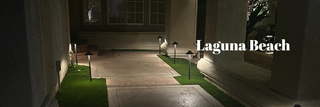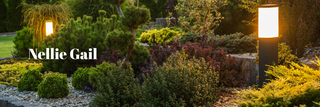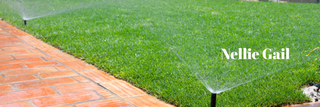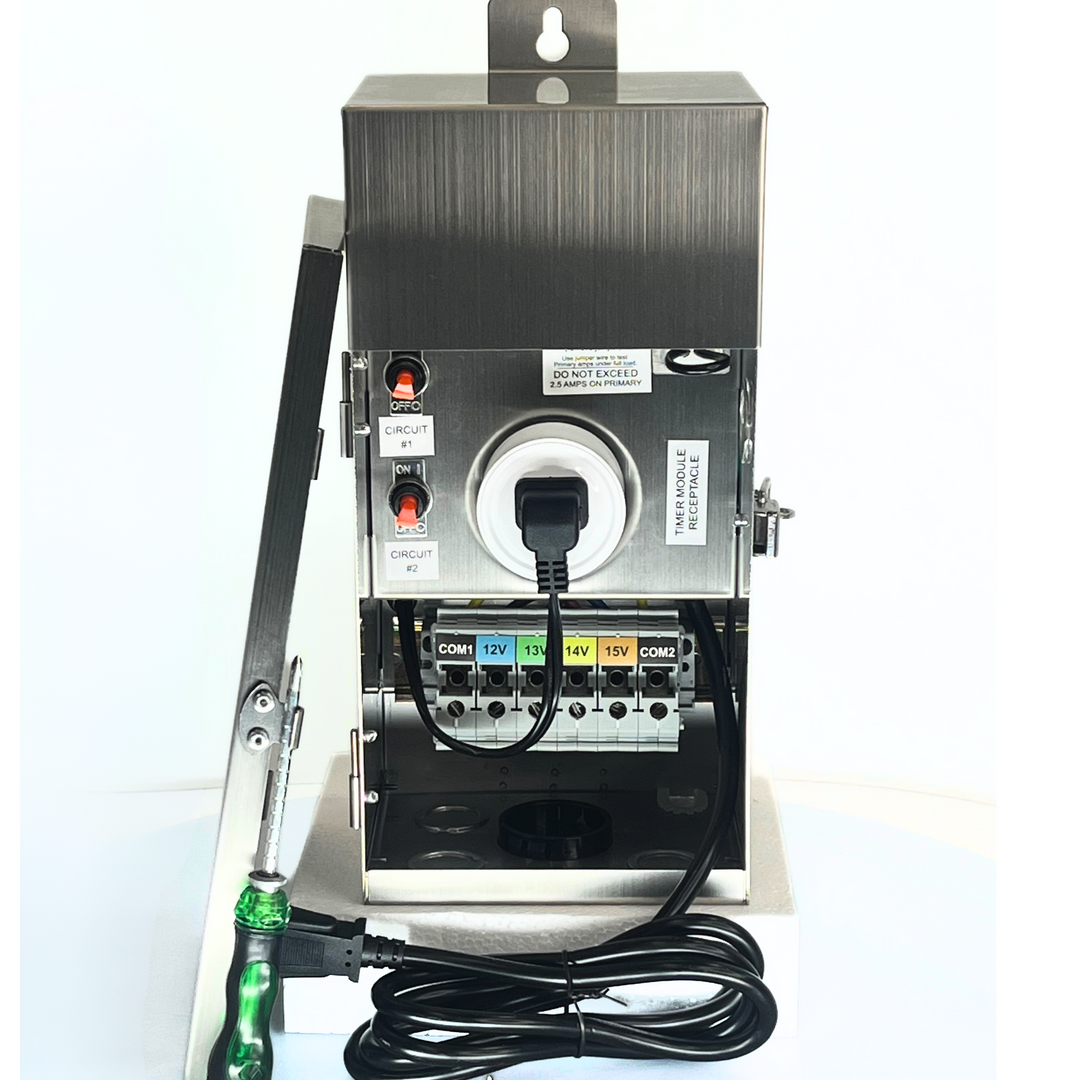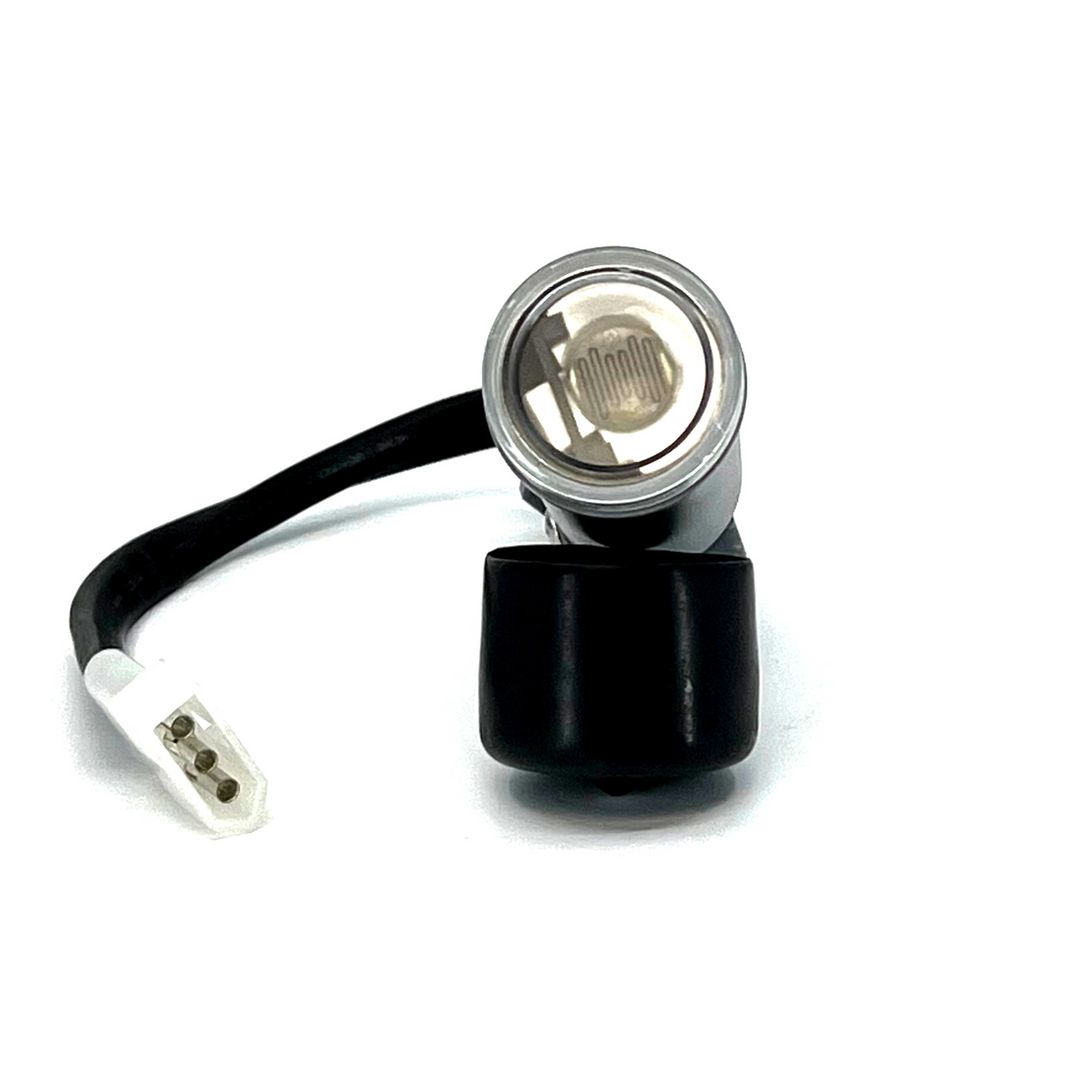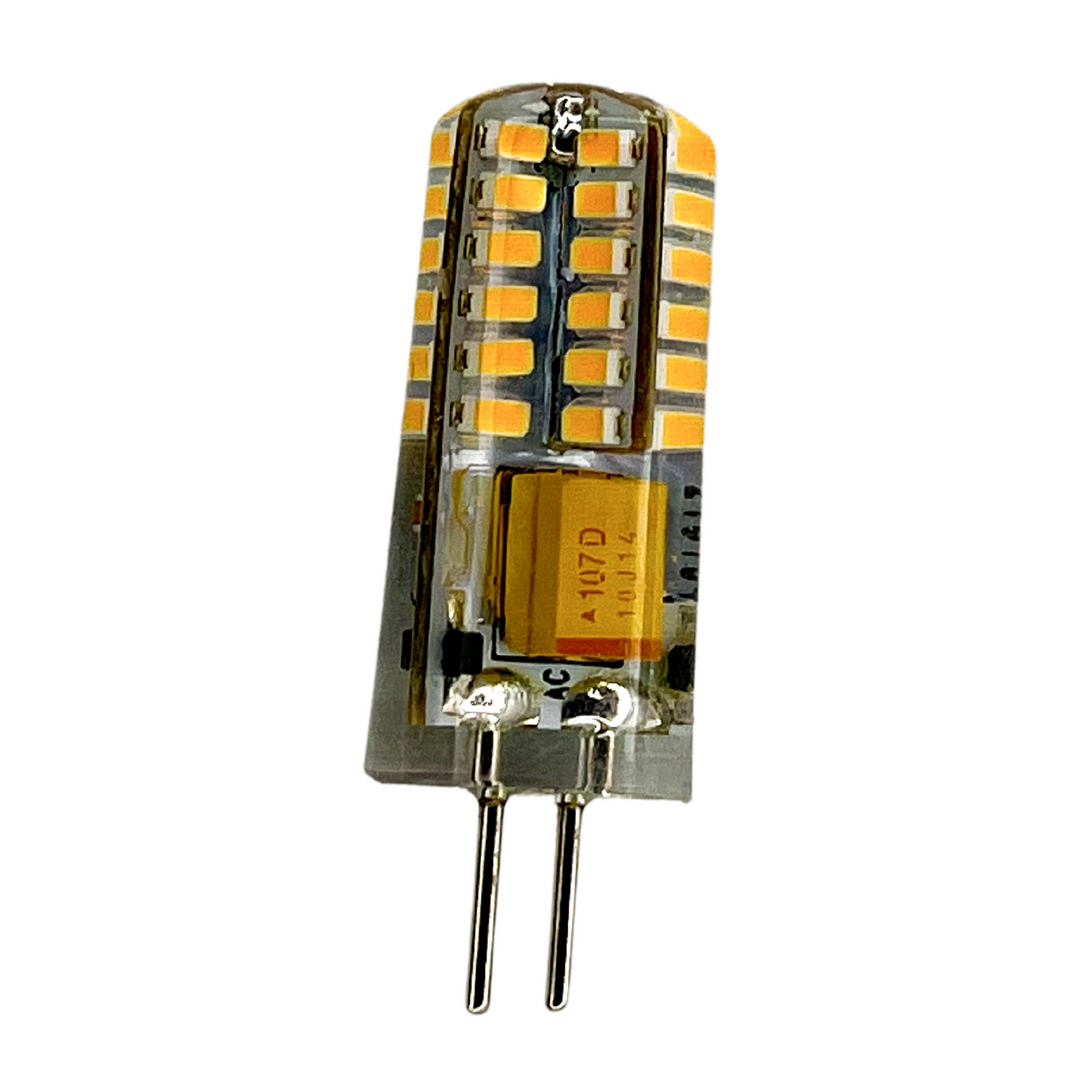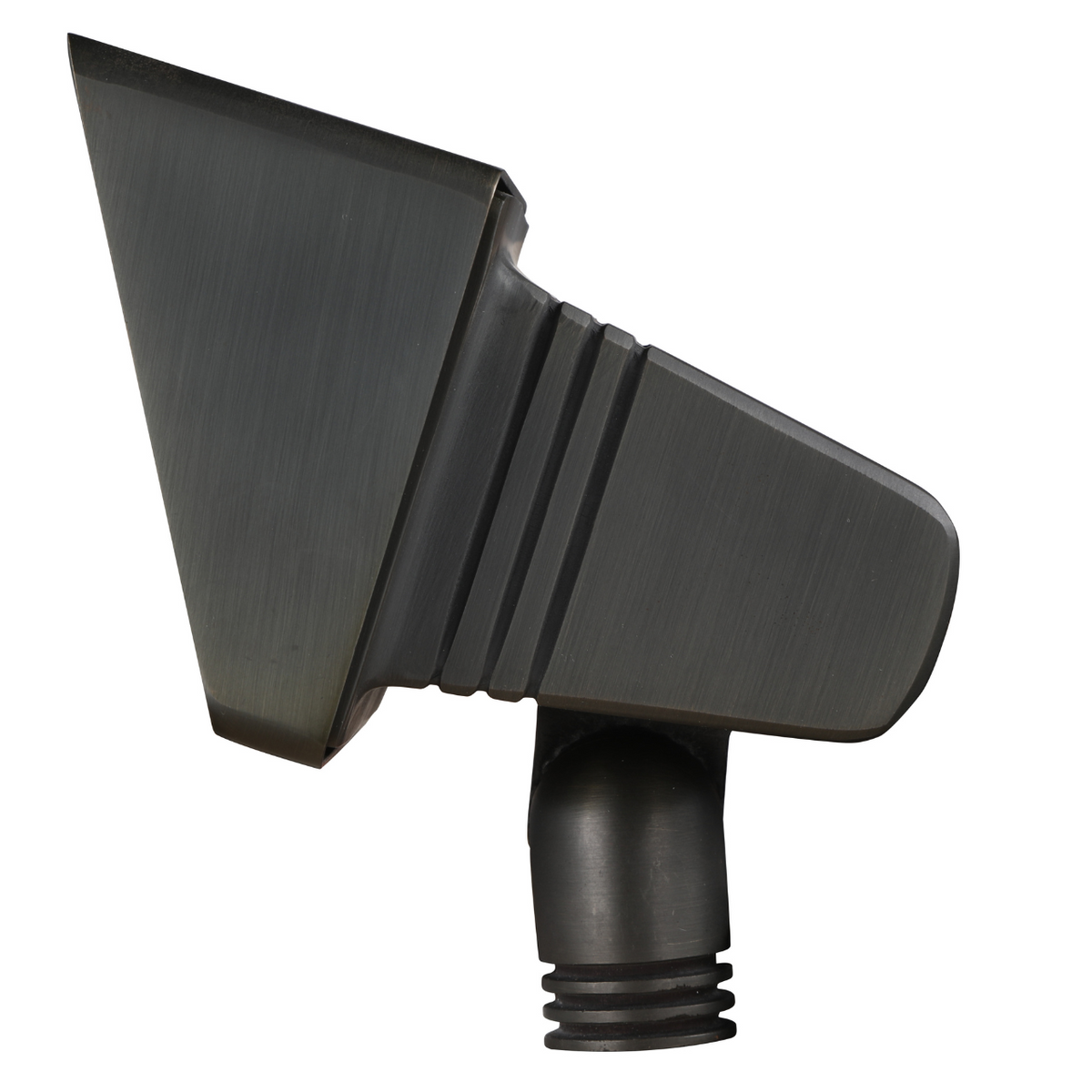
Landscape Lighting: Flood & Spotlight for Every Occasion Delivered
|
|
Time to read 6 min
Floodlights and spotlights are two common staples of the landscaping scene. But they're very different from one another. This article will explain each type, what their strengths are, how they contrast, and how you can incorporate them into your yard.
Landscape Lighting Explained
Broadly defined, landscape lighting refers to any type of light fixture designed for use in outdoor spaces. It can serve a range of purposes, from aesthetic flair to safety and security. Different kinds of landscape lights exist to fulfill each of these applications, including up lights, down lights, step lights, garden lights, string lights, and floodlights and spotlights, which we'll discuss in further detail below.
What Is a Floodlight?
Floodlights are broad-beamed outdoor lighting fixtures used to illuminate large areas such as sports fields, parking lots, yards and other outdoor spaces. These lights are usually high-powered and provide a very bright light that can cover a wide area for safety purposes or help with activities like security surveillance at night. You're probably most familiar with the type of floodlight used in stadiums and large turf areas, but they are also made for smaller applications and use in residential settings.
What Is a Spotlight?
Spotlights are narrow-beamed lights that create highly concentrated illumination in a single target area. Often used for stage shows and events, these lights are helpful when wanting to focus attention on something or someone. Spotlights are available in many shapes and sizes to accommodate a variety of needs. They can be mounted on a wall, suspended from the ceiling, or used as part of a mobile lighting system.
Floodlights and Spotlights: What's the Difference?
The dead giveaway between the two is evident in their names; floodlights flood spaces with light, while spot lights focus on a single spot.
Floodlights are typically used outdoors as a form of security lighting, or to illuminate large outdoor areas. They spread light over a wide area and can be mounted on walls and ceilings, or even placed directly into ground for landscape illumination.
Spotlights, on the other hand, are used to highlight particular objects. In an outdoor environment, they might be used to pick out a feature such as an architectural element or a sculpture. In interior applications, spotlights are often used in retail stores and museums to draw attention to items on display.
But aside from intended application, floodlights and spotlights can also be differentiated by two more-technical things: beam angle and throw distance. Read more about each below.
Beam Angle
Beam angle is defined as the spread of light that comes out of a lightbulb. It can be narrow or wide, with that factor determining how concentrated the power is.
Floodlights usually come with a beam angle between 45° and 120°. This is why they are often used for large-scale applications, as the light is broadly emitted and can cover a wide surface area. The only tradeoff is that the illumination will be somewhat dispersed and less powerful with a wide beam angle. Some manufacturers choose to compensate for this by designing their floodlights with higher wattages, but that inevitably makes them more electricity-consuming.
A spotlight's beam angle can range anywhere between 25° and 45°. Because this light is narrow and directional, it has a brighter effect overall. This means great visibility in a specific area with sharper shadows, but it comes at the expense of not being able to see surrounding areas as well.
Throw Distance
Throw distance is the measurable distance that light travels before it begins to dissipate. Wider lights dissipate faster and therefore do not travel as far. Spotlights that have narrow beams are able to travel longer distances as the light stays concentrated. The ultimate determinant of how large a throw distance either of these light types will have is directly related to the wattage. The higher the wattage, the stronger and further reaching its output will become.
How to Determine Whether a Floodlight or Spotlight Is Right for Your Home
Decisions, decisions. There's no single 'best' light for outdoor landscaping - it's a matter of context, with every situation having a unique set of factors to consider.
Consider Your Application
When deciding between a floodlight and spotlight, think about the purpose of the lighting. Floodlights are better suited for large areas that need to be illuminated uniformly; they can also be used as a security measure to deter intruders. Spotlights, on the other hand, are narrow and direct with a bright beam of light that can be directed precisely where you want it. They're great for accent lighting - to highlight garden features like waterfalls or sculptures - or task lighting for outdoor activities like grilling and entertaining.
Identify Your Coverage Area
This is an important thing to factor in when purchasing any kind of light, let alone ones as different as floodlights and spotlights. 'Coverage area' refers to the size of the space you want to light up. Floodlights are better suited for larger coverage areas whereas spot lights work well in smaller, more focused spots.
Know Your Needs
Picking the right lighting system can be as simple as taking a moment to truly think about your needs. There are so many things to compare between floodlights and spotlights, but some may be more important to you than others. Power usage is just one example - while most products on the market today are very energy efficient, floodlights generally use up more electricity. Unless this extra power is genuinely needed to light up a large area, it may be best to go with spotlights.
Think About Install
Again, both floodlights and spotlights are intended to be easy to install. But the process can look different depending on which one you choose. Floodlights are typically mounted on a wall or ceiling, but spotlights can also be suspended from the ceiling. With different attachment methods, as well as directions of light, it can be useful to consider how and where the product you choose will be installed.
Other Special Considerations
Of course, there are some basic decisions that you'll have to make in either case when shopping for a lighting system. The first of these is bulb type.
Most products available today are either halogen or LED. Halogen lights are the most common type, as they have been around for a long time and provide good light output at an affordable price point. They use a bulb containing halogen gas, which is then heated up to create light. Halogen floodlights and spotlights are a good choice for larger outdoor areas, but they do not last as long and require more wattage than LED lights. LED is a newer technology that uses light-emitting diodes (LEDs) to produce bright light with much less wattage than halogen bulbs. They last longer and generally require less maintenance over time.
Another important factor that can make or break a purchase is quality. Whether you choose to go with a floodlight or spotlight, it will ultimately only ever be as good as the manufacturer behind it. While it can be tempting to go with the cheapest option available, avoid doing so and put product integrity first. Reputable brands back their products up with warranties and guarantees, ensuring your investment is worthwhile in the long run.
Can Floodlights and Spotlights Be Installed Together?
Yes! But with some basic considerations; there's no rule saying that floodlights and spotlights can't be used in the same space. In fact, you might find that they work really well together. The main thing to consider is the power of each light. If you're planning to use both floodlights and spotlights in your outdoor space, make sure that the wattage of each type does not exceed what your electrical system can handle. The installation process will also be slightly more involved when using both types of lights, so make sure you're ready for it.
It's important to think about how things will look visually, too. As contrasting elements, floodlights and spotlights can add a striking effect to your outdoor space. However, if you use too many of one type it may look disjointed or garish. Some people also assume that the more lights you have, the better. But it's actually the opposite. Putting multiple high-powered lights in the same space will actually wash out the effects of all your lights and potentially cause glare.
The great thing about landscape lighting is that it comes in endless shapes and sizes. Floodlights and spotlights are just two examples of this broad sea of options. If you're interested in exploring some more, why not check out Top Notch Landscape Lighting's collection? With a wide variety of products in all sorts of styles, you're sure to find something that suits your needs.




![Top-Notch™ Felicity [Brass Flood] Landscape Outdoor Light (Bronze) LED 2700k T3 2.5W 10-15v](https://cdn.shopify.com/s/files/1/0585/8440/0044/t/16/assets/protrade-felicity-flood-spot-landscape-light-1-1686604981814.png?v=1686604983)
